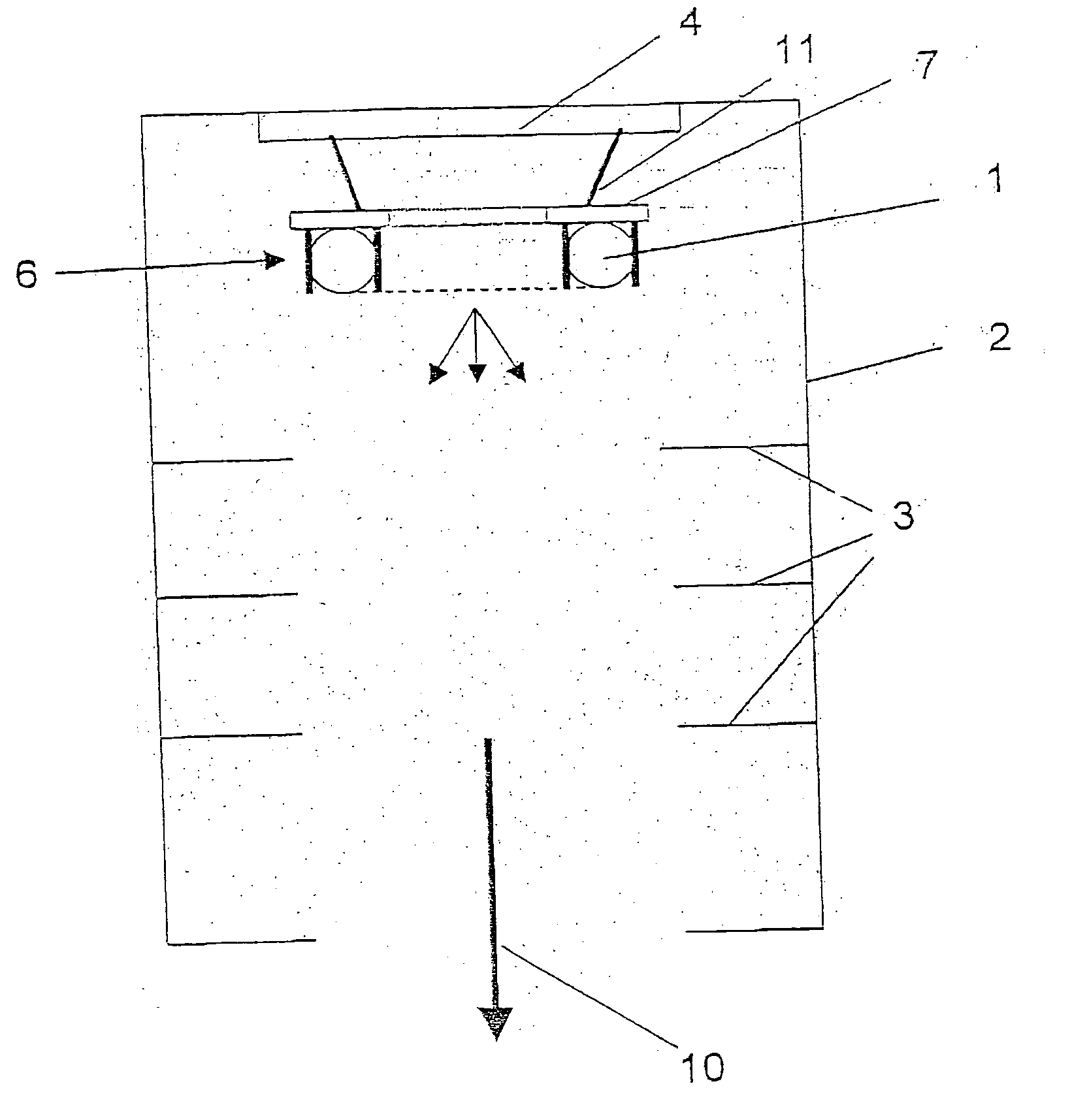[0013] If now, as in the case of the present invention, the mirror element is embodied or formed at least in part of
metal, a
voltage can be applied to the mirror element. In particular, a
substructure group or a constructional sub-element of the mirror element, such as, e.g., a frame, a holder or the mirror surface can be embodied or formed entirely or in part of
metal. The applied
voltage supports the pulsed ignition of the radiation source and thereby helps to make a homogenous ignition of the radiation source. In this regard, gas-filled tubes are generally used as radiation sources, and an
ignition voltage is applied to these tubes via suitably arranged electrodes. Alternatively to an
ignition voltage used specially for the ignition or in addition to this ignition
voltage, a
constant voltage can be applied to the ends of the gas-filled tubes. With such radiation sources, upon ignition, a luminous
discharge is transmitted from one
electrode through the tube to the other
electrode, which leads to an inhomogeneous
radiation effect. The application of an additional voltage to the mirror element directly adjacent to the radiation source leads to a much quicker and more homogenous ignition of the radiation source. Thus, according to the invention, the mirror element is positioned adjacent the radiation source, and preferably is positioned to directly abut against the radiation source in order to achieve the best possible effect upon ignition and, thus, the best possible homogeneity.
[0014] In addition, the mirror element reflects radiation components of the radiation source that are irradiated against the desired
irradiation direction of the
solar simulator. Thus, the level of effectiveness of the radiation source is increased, whereby overall less energy is required. Moreover, the radiation source can be operated with lower power with the result that the maximum of the irradiation spectrum shifts into the
infrared range. This is a desirable and advantageous effect, since, particularly in the
infrared range, conventional solar simulators exhibit a radiation intensity that is too low compared to the solar spectrum. The homogeneity of the irradiation is also advantageously improved through the reflection effect of the mirror elements in the direction of the irradiation direction of the solar simulator.
[0017] It has been shown that metals such as gold as well as metals with
oxide layers, such as in particular light metals and also semiconductors with
oxide layers, feature very good reflection properties particularly in the
infrared range. These materials in particular can therefore be used within the scope of the current invention in an advantageous manner.
[0019] The homogeneity of the irradiation can be increased even further in that the radiation source is surrounded by a housing that features several screen elements arranged one behind the other in the wall area in the irradiation direction. These screen elements intercept those radiation components of the radiation source that are not irradiated directly or chiefly in the direction of the irradiation direction. In addition, these screen elements can preferably be covered with a low-reflection
coating or can be made of a low-reflection material in order to largely eliminate scattered radiation.
[0020] A preferred further development of the invention provides that the radiation source and / or the mirror element is connected to a carrier plate of granite via holders. The surface of the carrier plate is thereby either smoothly polished or microscopically roughened in order to have a reduced reflection effect. Such a granite plate has proven to be an ideal carrier plate which has a high stability, in particular also a high temperature stability, as well as also the necessary stability and insulation effect with respect to the high voltages applied via the holders and conducting feeds to the radiation source and / or the at least one mirror element.
 Login to View More
Login to View More 


